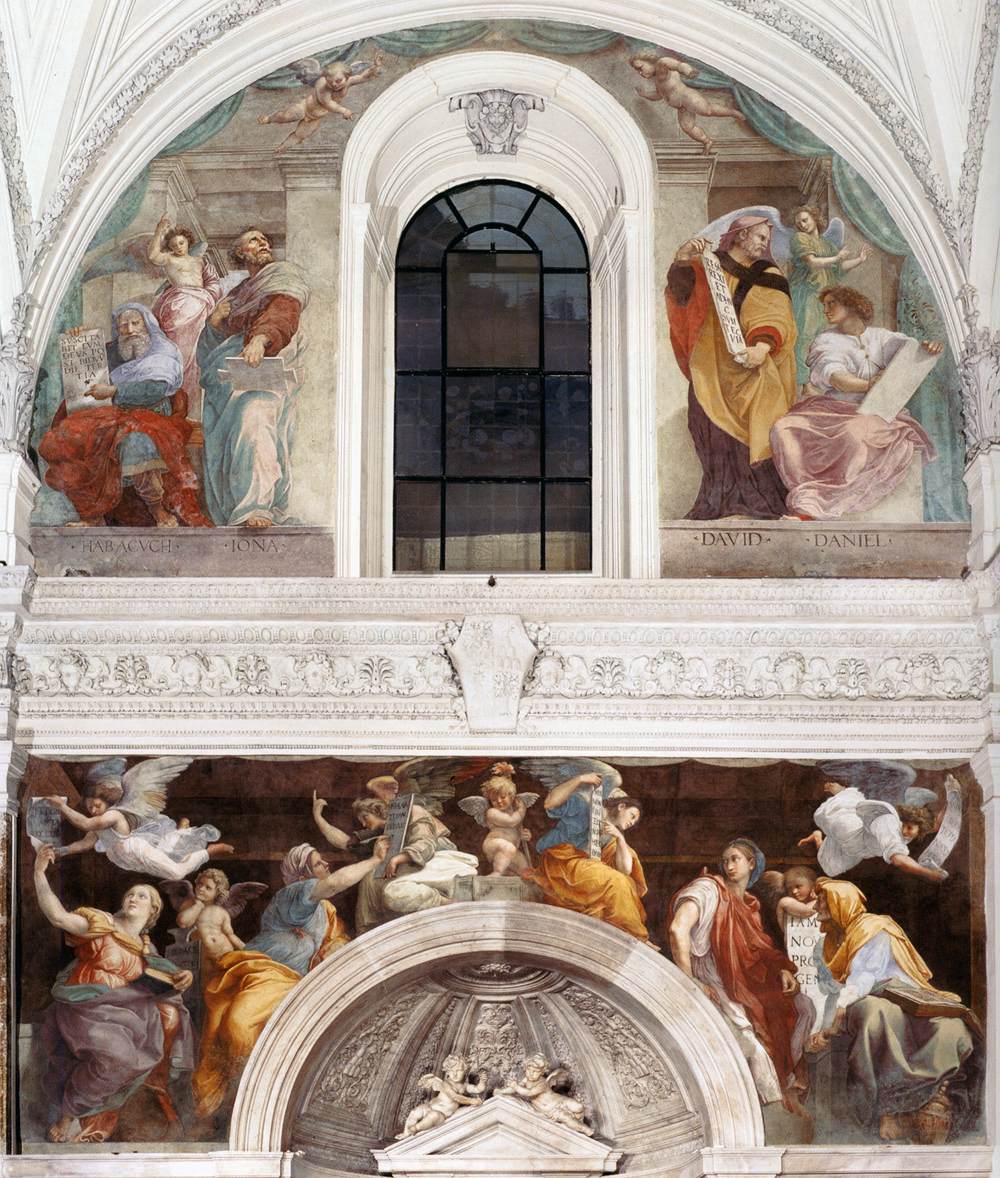Sibyls and Prophets
Story
In the Renaissance period, the decoration of a chapel was the most common task in the field of religious painting. Countless examples survive in a wide variety of forms. The decoration of a chapel was fundamentally dependent on its architectonic structure. The more elaborate the architectonic articulation, the more the fresco decoration becomes a subordinated filling of the interstices. Where chapels consisted only of altars in front of the walls of the church, their paintings also served as decorative elements in the church's main room. The decoration of Agostino Chigi's altar niche in Santa Maria della Pace in Rome can also be seen as decoration for the nave.
Chigi ordered frescoes of prophets and sibyls on the walls above the arch of the niche from Raphael. The depiction of prophets and sibyls in the spandrels of a chapel arch was, in itself, nothing new in Rome. What was new was the way the full height of the church wall was employed to create a two-storey prospect of figures that transformed the architecture into an iconostasis. Seated sibyls are grouped below, their forms harmonizing with the supporting arch of the chapel; above it, the vertical thrust of the windows mirrors the standing prophets. The illusionistic pier structure provides them with space.
